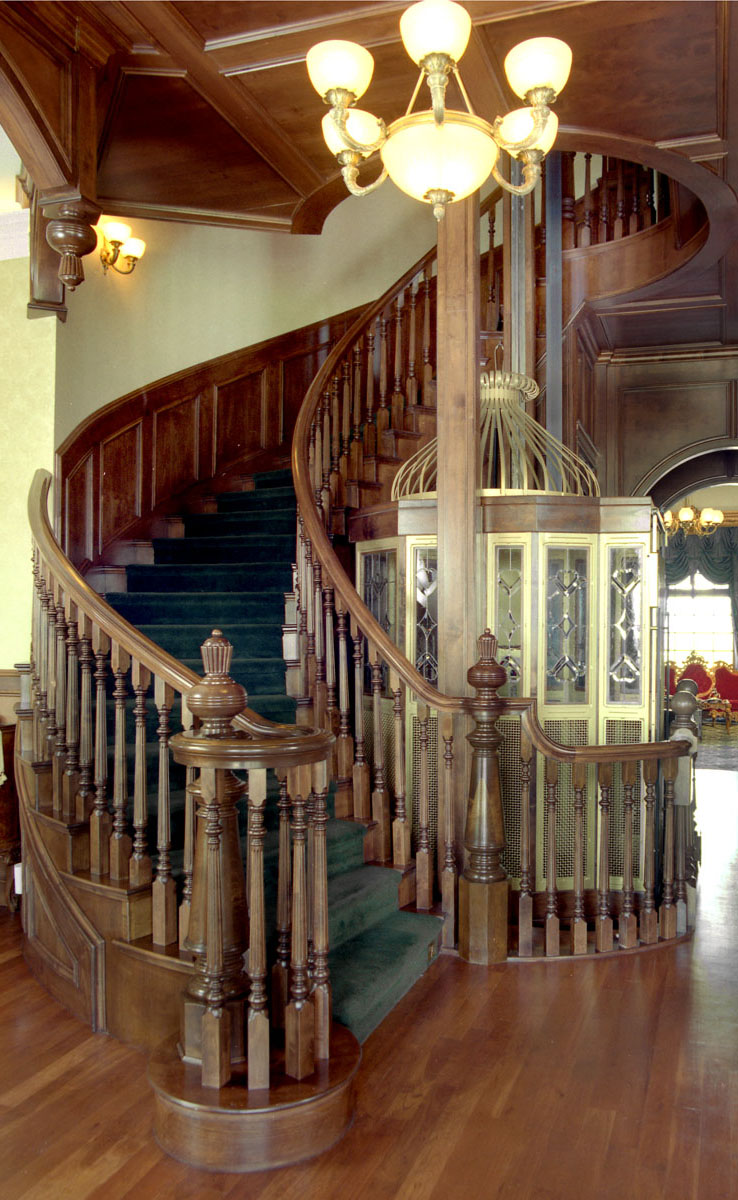Wood Stairs » Product Information » Buying Handrails
Handrails specifically are the top horizontal piece of a balustrade that is grasped by the hand to give support. More generically the term handrail is commonly used to describe the entire balustrade or banister. The actual handrail component serves two primary functions, safety and aesthetics. As far as safety, the handrail is the stair part that you use to support yourself as you ascend or descend a flight of stairs. It also provides the top boundary or guard to prevent you from falling over the side of an open stairway or balcony. The other function served by the handrail is, of course, the appearance. The decorative profile of a handrail adds to the aesthetic and stylistic design of a staircase and banister and the space in which it exists.
Handrails are available in a wide variety of designs and materials that are used to enhance the balustrade. Wooden rails are more often larger than wrought iron variations and have a warmer tone and in fact feel. Wrought iron rails are cooler to the touch and smaller but have a definite advantage in many situations, especially in exterior applications where durability in the elements is necessary.
The size of the handrail plays a key role in defining the “weight” of a balustrade. A large wooden rail not only creates a stronger more solid look in itself but also allows for larger balusters and newel posts which further increases a railing systems boldness. In contrast, smaller wood rails are more graceful and elegant and similarly reduce the size of the balusters they will accommodate making for comparatively more dainty banisters.
The handrail profile is important because the more smooth the design the sleeker it appears while more detail allows for greater depth and dimension. The profile also determines the comfort the rail provides when grasping it, which can, in turn, be a safety feature. A good ergonomic profile is easy to grasp, feels comfortable and will provide that necessary support as you travel a staircase or worse, should you fall. An integral component in most balustrades are handrail fittings. These are separate parts that are used to join handrails at angles to make smooth transitions or to add a decorative element to the design. An example of a fitting that makes a transition would be a Quarter Turn, while an exclusively decorative handrail fitting is the beautiful volute.

Luxurious Wood Handrail and Balustrade
Finally, most wood rails are made to accept balusters. These can be drilled for dowel top wood balusters or wrought iron balusters or have a plowed out bottom to accommodates square top wood balusters.
From a distance, it is often difficult to differentiate between two profiles of hand rail. Often this stair component is selected as kind of an afterthought. In fact, it should be a relatively simple choice but does need some attention. This is especially true because of its critical role in safety, but also because it helps to determine the overall design of your balustrade.
